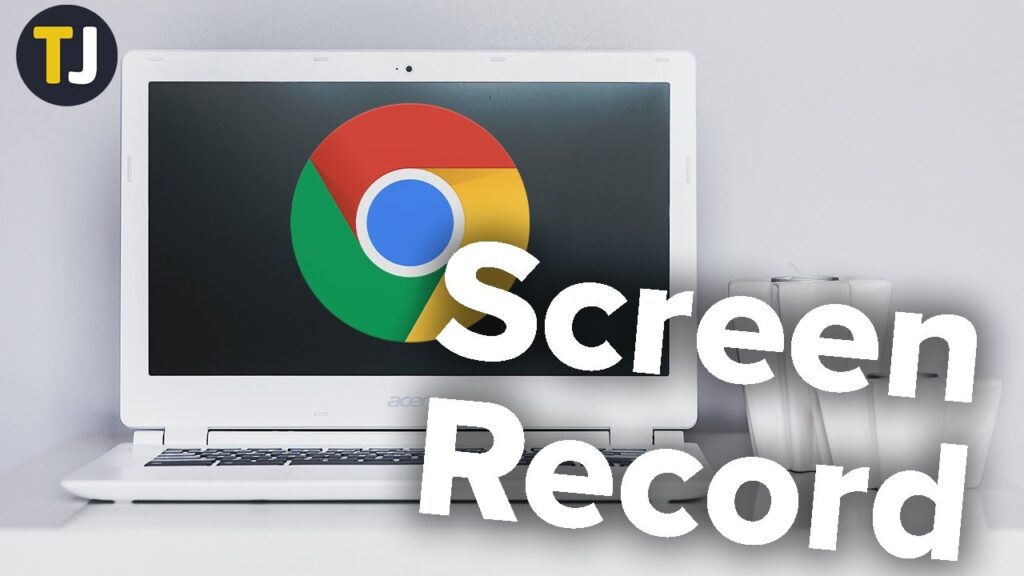
Recording your device’s screen can be essential for students, especially for creating presentations and tutorials. Chrome OS has a built-in tool that simplifies screen recordings on Chromebooks.
Using the Built-In Screen Capture Tool
The Chromebook screen capture tool is located in the Quick Settings panel. This tool can capture static screenshots and record video, introduced in Chrome OS 89.
- First, click the clock on the Chromebook Shelf in the bottom-right corner to open the Quick Settings panel.
- Tap the clock in the taskbar.
- Select the arrow in the top-right of the menu if it’s not fully expanded.
- Next, click the “Screen Capture” button.
The Screen Capture toolbar will appear at the bottom of the screen. Ensure the video icon is selected for screen recording. The camera icon will only capture screenshots on your Chromebook.
- Select the video icon.
- You can record the full screen, partial screen, or a specific window. Select one to proceed.
- Before starting, click the gear icon to adjust settings like recording audio from your microphone and video from the webcam, and choosing where to save the recording.
Starting the recording differs depending on the type you selected:
- Full Screen: Click anywhere on the screen to begin recording.
- Partial: Drag to select the area you want to record and then click the “Record” button.
- Window: Click the window or area of the screen you want to record to begin recording.
A three-second countdown will appear on-screen, and then the recording will begin. When you’re finished, click the red stop button on the Shelf.
A notification will appear saying “Screen Recording Taken.” Click it to go to the video file in the file manager.
Recording with Audio Using Screencast
The built-in capture tool includes recording audio from your microphone while recording the screen, as seen in the option menu above. For more advanced features, use the Screencast app.
The Screencast app offers a robust experience, allowing you to draw on the screen, transcribe your voice to text, and more. This tool is particularly useful for students creating presentations.
- First, open the app launcher and select the “Screencast” app.
- Click “New Screencast” in the top left.
- A toolbar will appear at the bottom. Tap the gear icon to open the settings.
- Enable “Microphone” to record audio. You can also toggle your camera on or off.
You can record the full screen, partial screen, or a specific window. Select one to proceed:
- Full Screen: Click anywhere on the screen to begin recording.
- Partial: Drag to select the area you want to record and then click the “Record” button.
- Window: Click the window or area of the screen you want to record to begin recording.
A three-second countdown will appear on-screen, and then the recording will begin. When you’re finished, click the red stop button on the Shelf.
The recordings can be found in the “My Screencast” section of the Screencasts app.
Finding Your Screen Recordings
Screen recordings on a Chromebook are saved to the “Downloads” folder by default. You can change the destination from the settings if you’d like.
- To navigate to the “Downloads” folder, first open the “Files” app from the app launcher.
- Select the “Downloads” folder from the sidebar.
The screen recordings are .webm files. You might want to convert them to MP4 for easier use.
Recordings from the Screencast app are saved in the cloud and can be shared by sending a link.
Recording with Device Audio
To record device audio while screen recording on your Chromebook, the Nimbus Screenshot & Screen Video Recorder extension is recommended. It lets you record internal audio and offers advanced features like webcam view and mic audio recording.
- Install the Nimbus Screen Recorder tool from the Chrome Web Store.
- Open the extension from the toolbar and click on “Record Video”.
- Choose “Tab” at the bottom and enable “Record Tab Sound”. You can disable the mic sound toggle if you wish. Note that the internal audio recording option is only available in Chrome tabs.
- Click on “Start Record” to begin. You can now record the screen on your Chromebook with device audio using this extension.
Make the Most of Screen Recording on Your Chromebook
Screen recording tools are invaluable for students needing to create tutorials, presentations, or capture lectures. The built-in tool is simple to use, while the Screencast app offers enhanced features for more detailed projects. For those requiring internal audio recording, the Nimbus extension is an excellent solution. Chromebooks make it straightforward to capture and share screen recordings, helping you stay organized and productive.